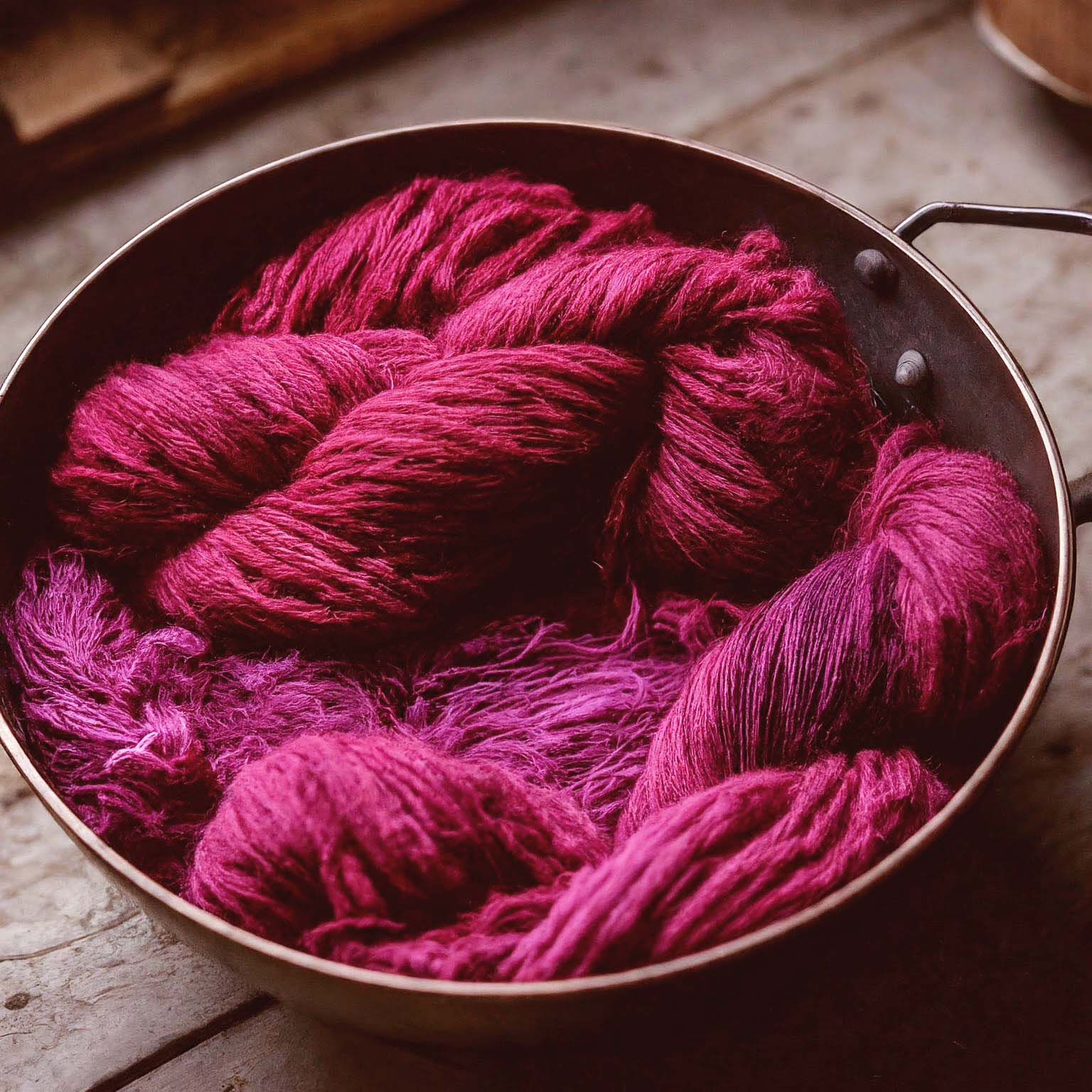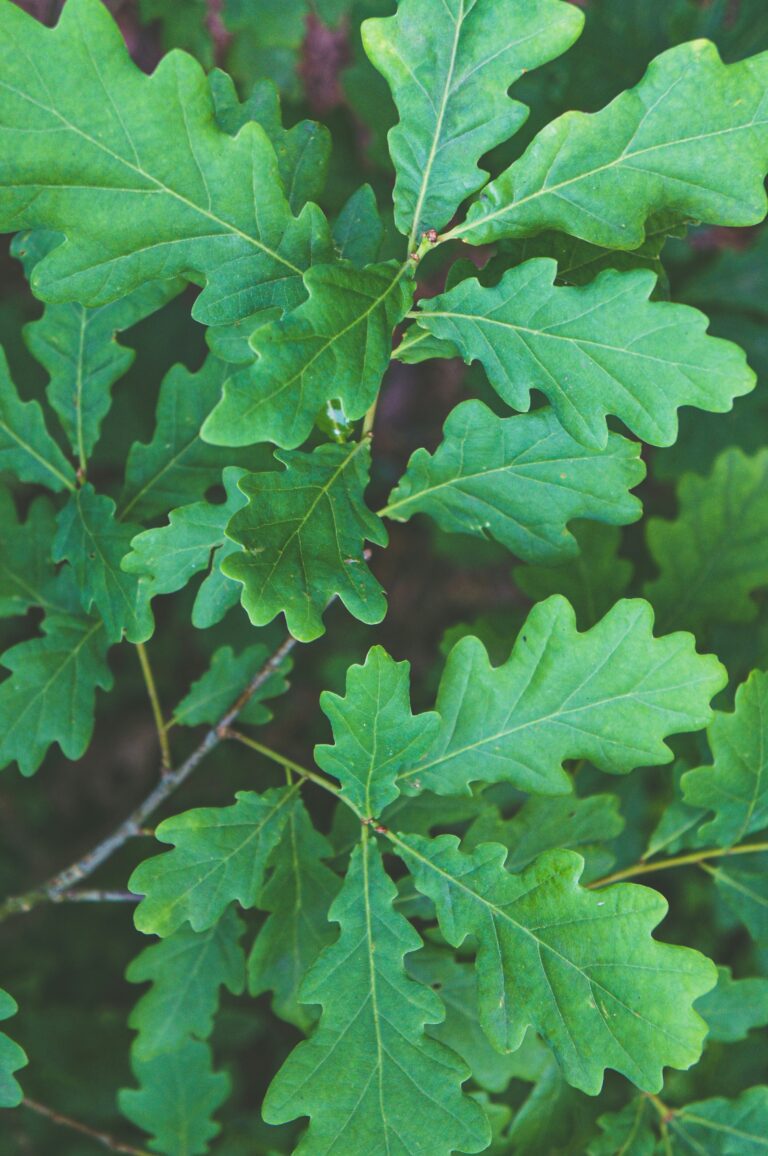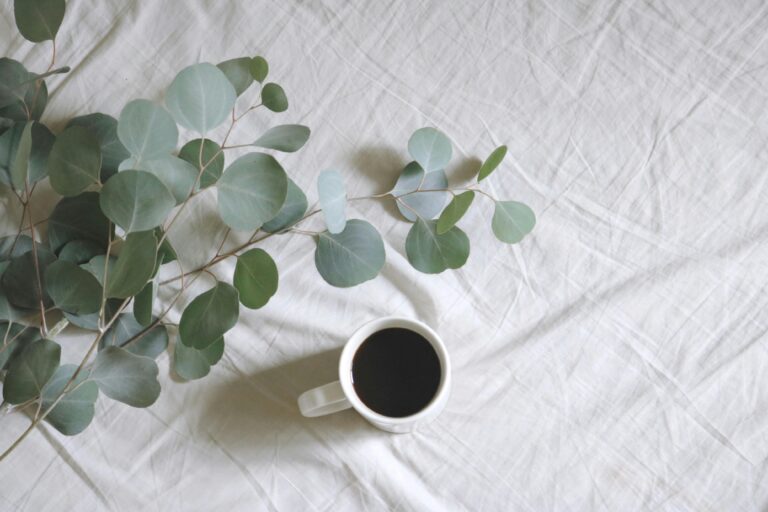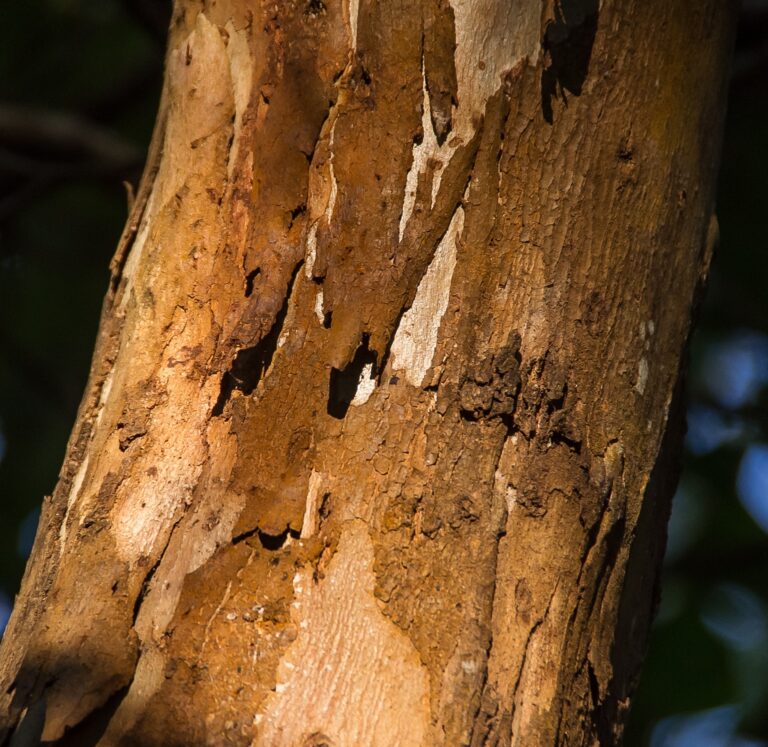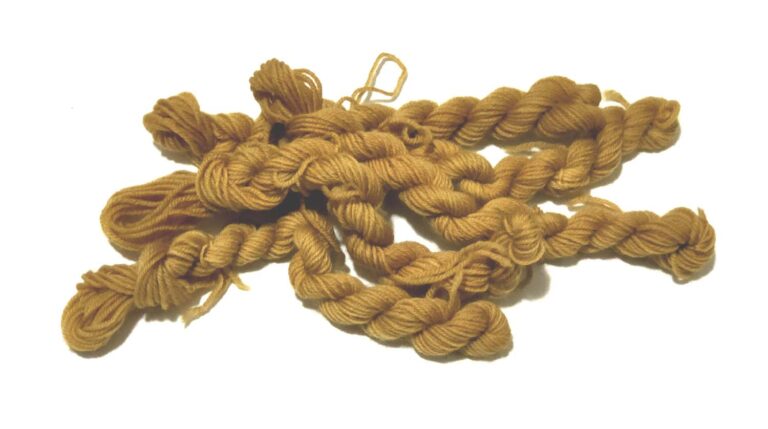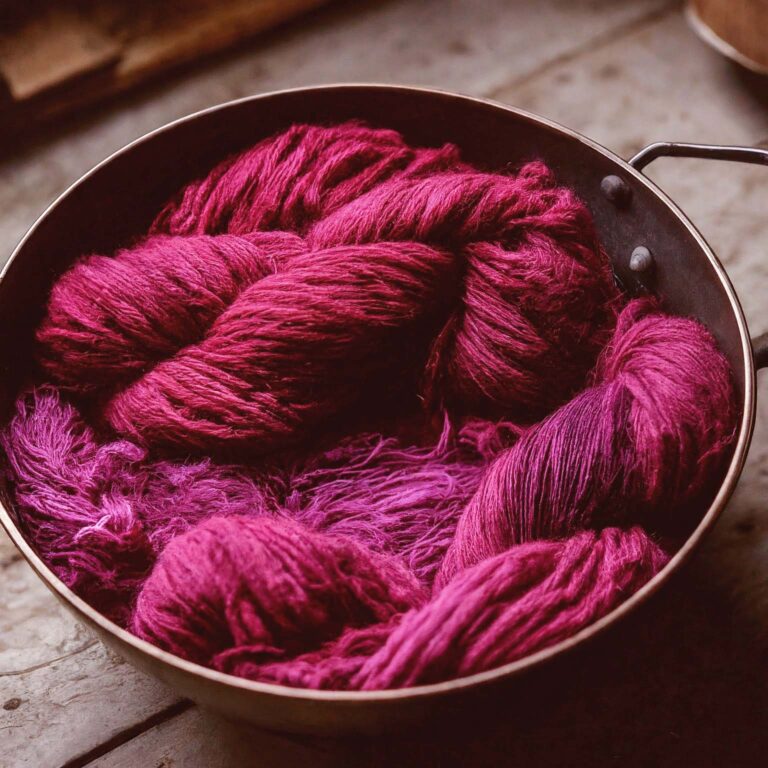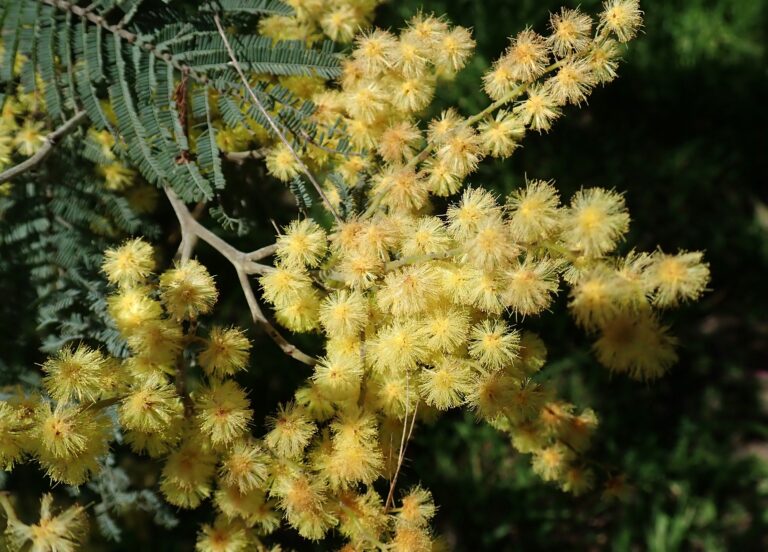Using additives and mordants while dyeing with Lac for great colour.

Dyeing with Lac can produce some beautiful pinks and purples. Here is a look at how some of these colours can be achieved?
In our last post on Lac we looked at using 2 different dyeing methods to see which had better results. We used both solar dyeing and heat dyeing. Due to the results of these experiments, I decided to continue my journey with lac by using the heating method of dyeing.
If you would like full instructions on heat dyeing with lac click on the button below. There is also a little information on the lac dye itself including what it is. At this point, I will say that it is the resin made by a beetle, so if you are vegan, you may not wish to try these experiments.
Different Mordants and additives
In this experiment I will be looking at how 3 different mordants and 2 different additives effect the colour of the lac dye. The 3 different mordants are listed in the fibre preparation with links on how to use these mordants before dyeing.
The 2 additives we are looking at in this experiment are Cream of Tartar and Baking Soda. They are added directly to the dye bath and are readily available in your pantry or supermarket.
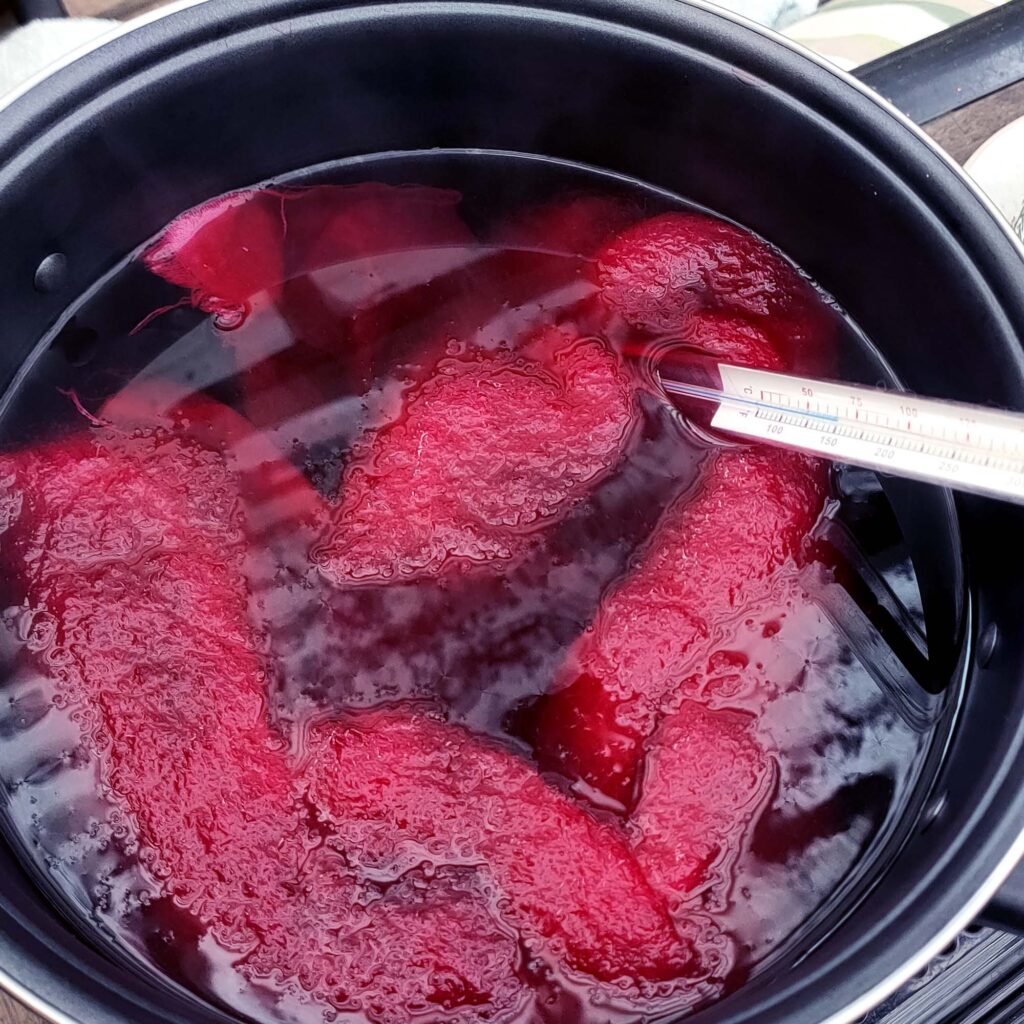
Safety Note
Always ensure when dyeing of any nature, to keep all saucepans and utensils used in the process, separate from your general cooking supplies. You do not want to cook with anything that has been used to mordant or naturally dye your fibres. You should also wear gloves and a mask while handling your chemicals.
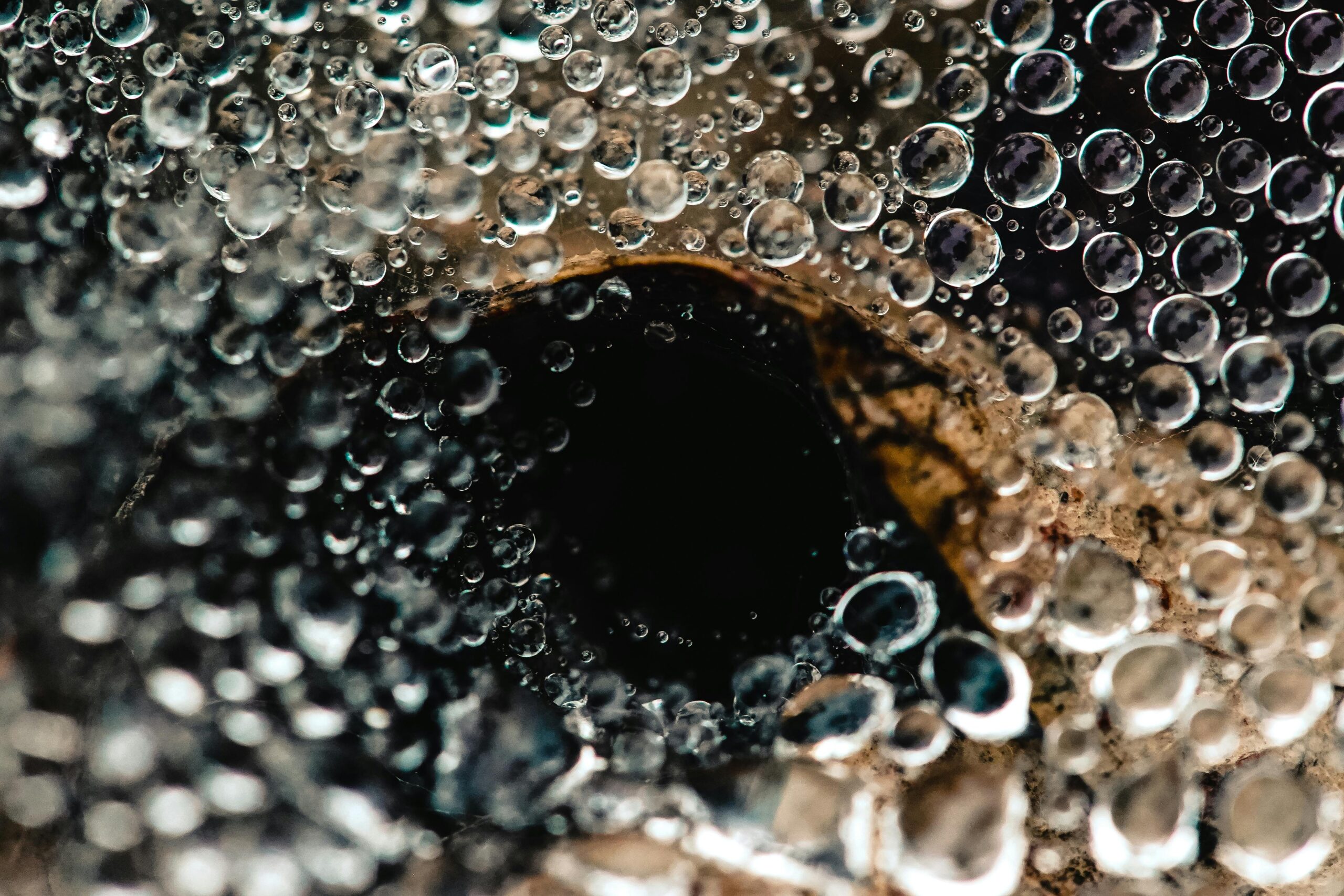
Fibre Preparation
Before dyeing you must first scour (wash) and mordant your fibre.
For this experiment I have used wool roving mordanted with alum, iron and copper.
Measurements.
The first thing you will need to do is weigh your fibre. You will need to know how much fibre you have, to determine how much lac to use in your solution. This measurement is called WOF (weight of fibre). You should always weigh you fibres when dry and free from debris.
For this experiment I decided to use 10% of WOF. So for 10g of wool roving I used 1g of lac extract.
Dyeing with Lac and alum
In these examples we have some mordanted wool roving with alum. The first row was then dyed with 10% WOF lac. The next row had 1% WOF of Cream of Tartar added to the lac dye bath. In the third row I dissolved a small amount of baking soda, not more than 1/4 of a teaspoon, into some hot tap water and added that to the dye bath.
The first circle in each row shows the roving when rinsed and dried. The next circle is after the roving was wet felted using a gentle olive oil soap. And the third circle is the felt after it has spent 4 weeks in the sun.
As you can see we achieved some lovely pinks. The straight alum and the cream of tartar examples did not have a lot of difference between them, though the cream of tartar example did look brighter and more vibrant. The baking soda gave a lovely pale pink.
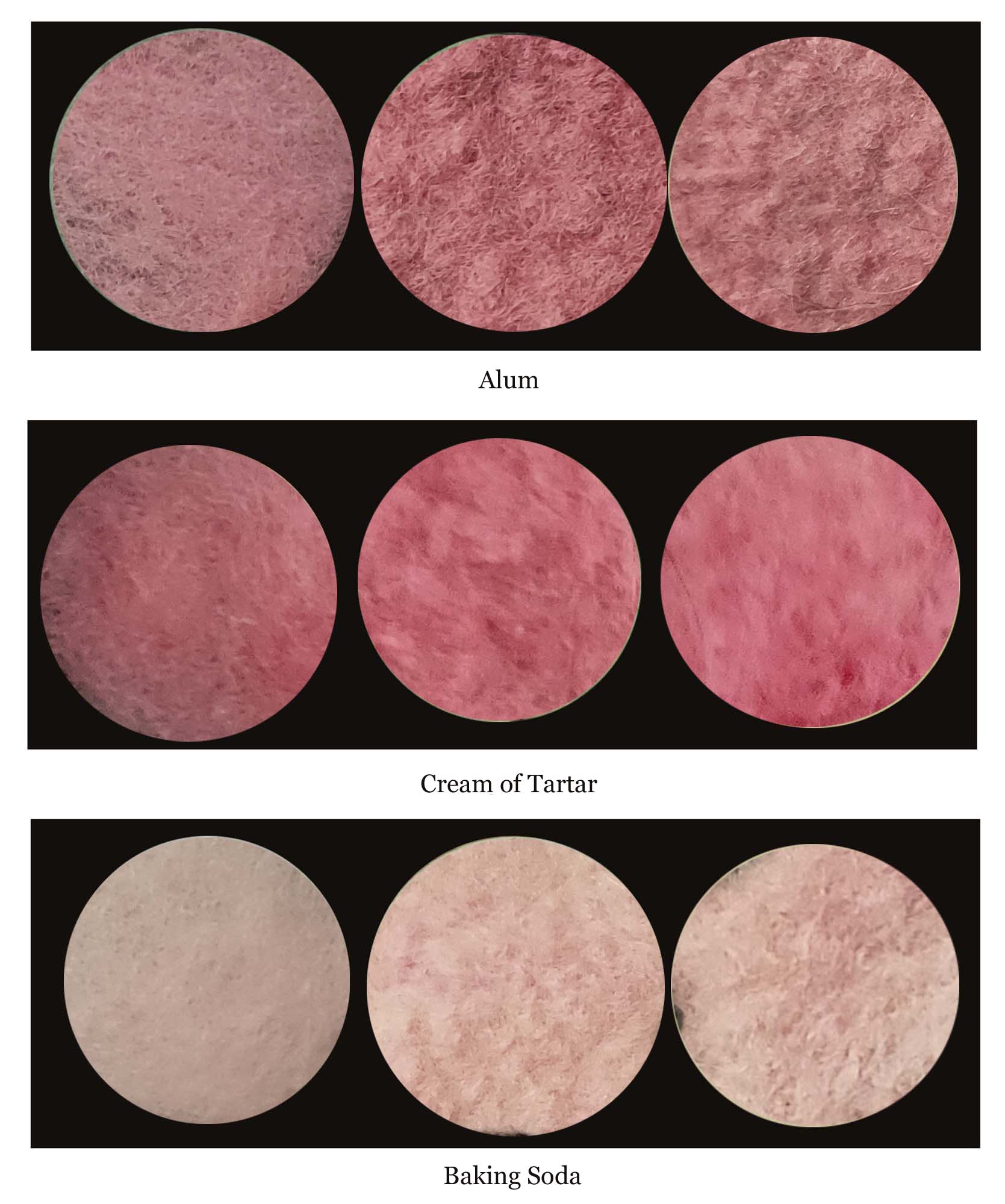
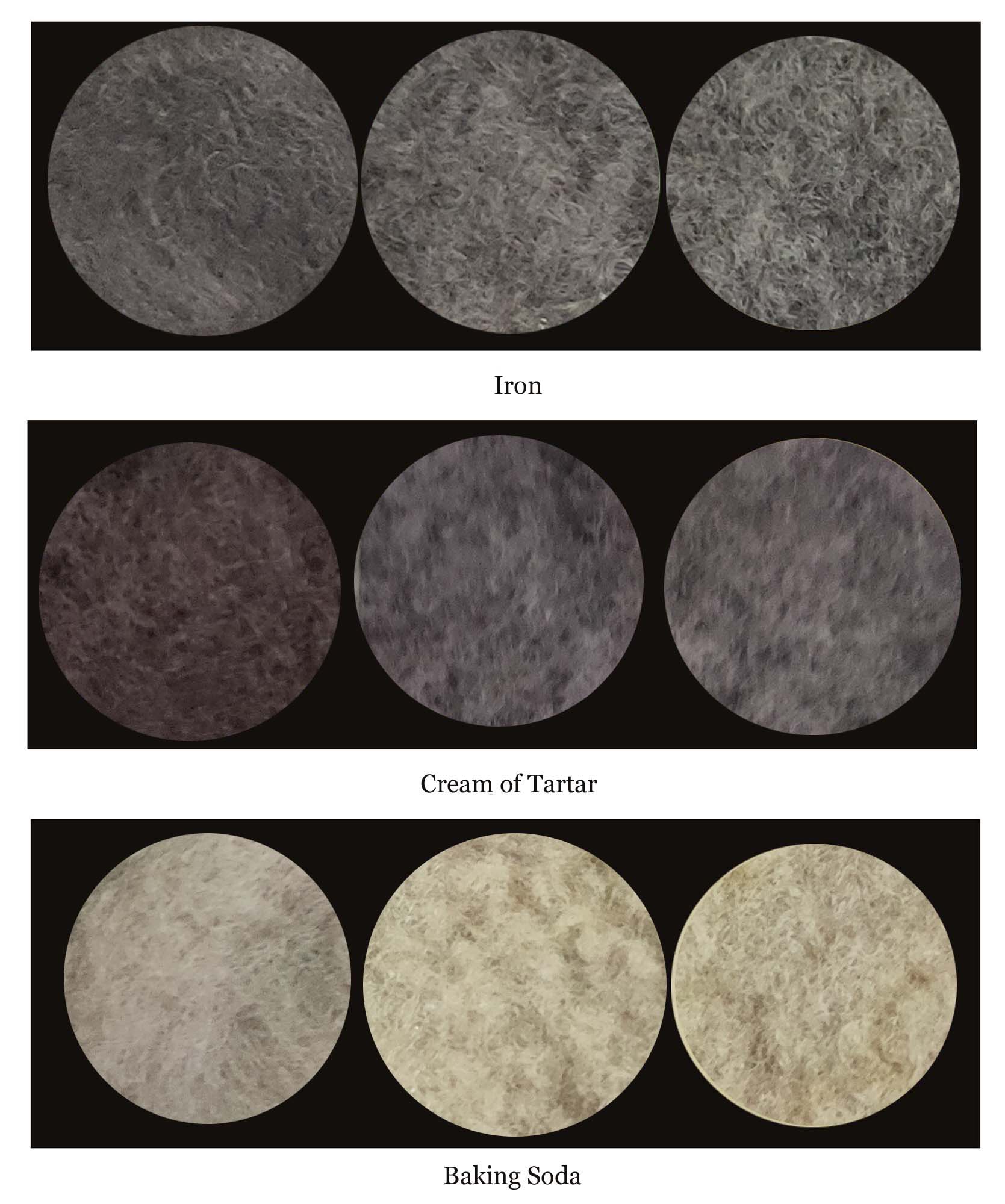
Dyeing with Lac and Iron
These example were done exactly the same as above with 1 difference. They were mordanted with Iron. As you can see we got some great purples with the first 2 rows. There is not a lot of difference between the 2, but again the Cream of Tartar has seemed to make the colour a little more vibrant.
The baking soda results were not quite as good. It was a bit of a wishy washy colour that did seem to change slightly with wet felting.
Update of Lac threads 19/9/2024
Due to the strong colours that are produced by lac, I wanted to check that they were able to be washed without the dye running. In this instance I have mordanted 2ply wool threads with iron and then dyed them with varying WOF’s of Lac.
The first circle are the threads after being sprayed with water. The 2nd circle shows the same threads after being hand washed with a gentle soap and then dried. As you can see the dye did not run at all. I was very happy with these results.
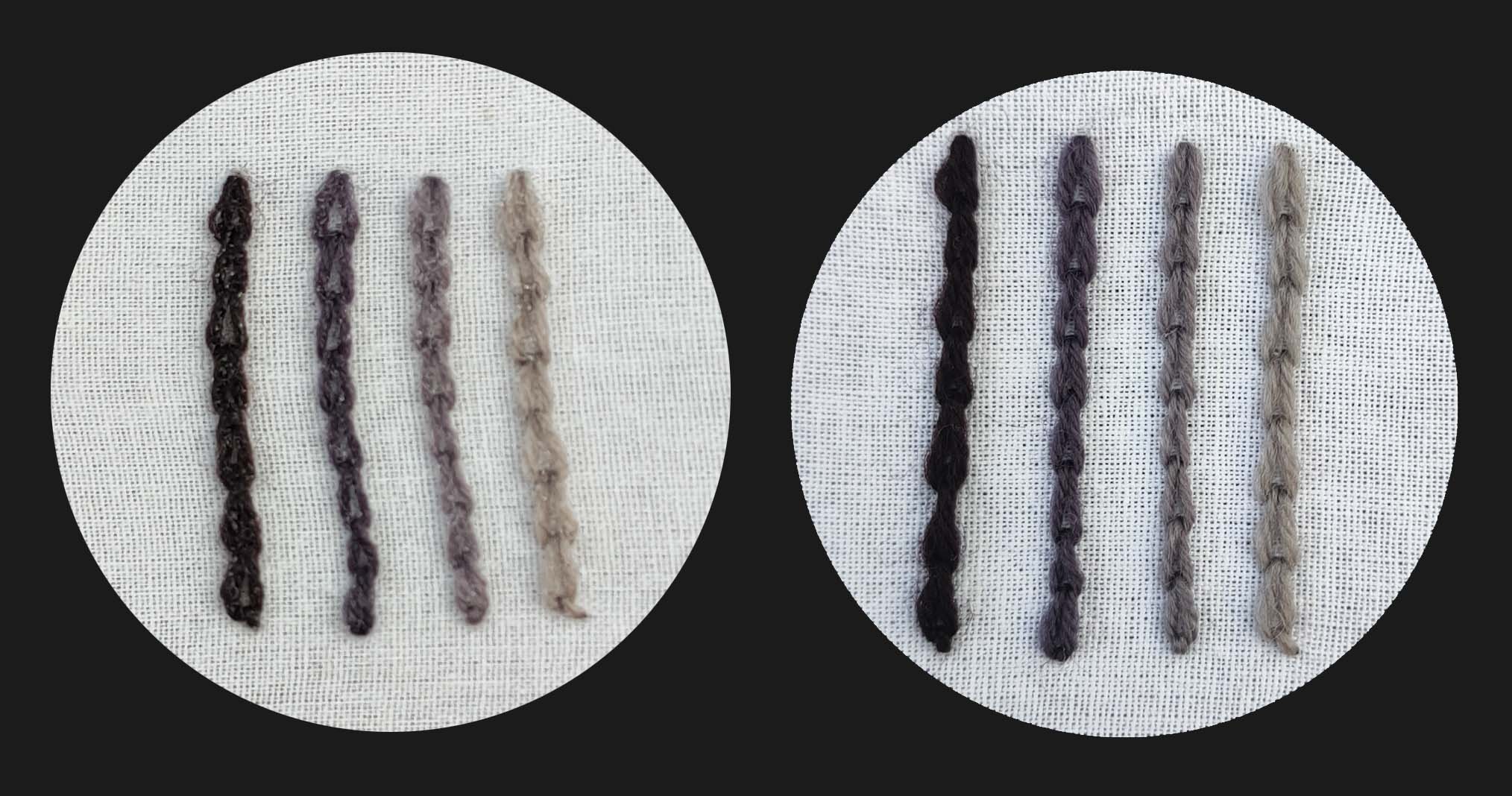

Dyeing with Lac and Copper
And now a completely different pinky/purple. These results were obtained in the same way as the previous 2 experiments. In this case though, the roving was mordanted with copper.
The addition of Cream of Tartar really did make a big difference here with a beautiful vibrant reddy purple. Again the addition of baking soda seemed to make the colour rather wishy washy.
All up I have been really happy with the range of results and hope that this encourages you to start playing with natural dyes :-).
Join us on Instagram www.instagram.com/DyetoCraft
Etsy Shop Now open
If you like the idea of using organic naturally dyed threads in your craft but just don’t have the time, come and have a look at our Etsy Shop where you will find an array of beautiful colours provided by nature.

